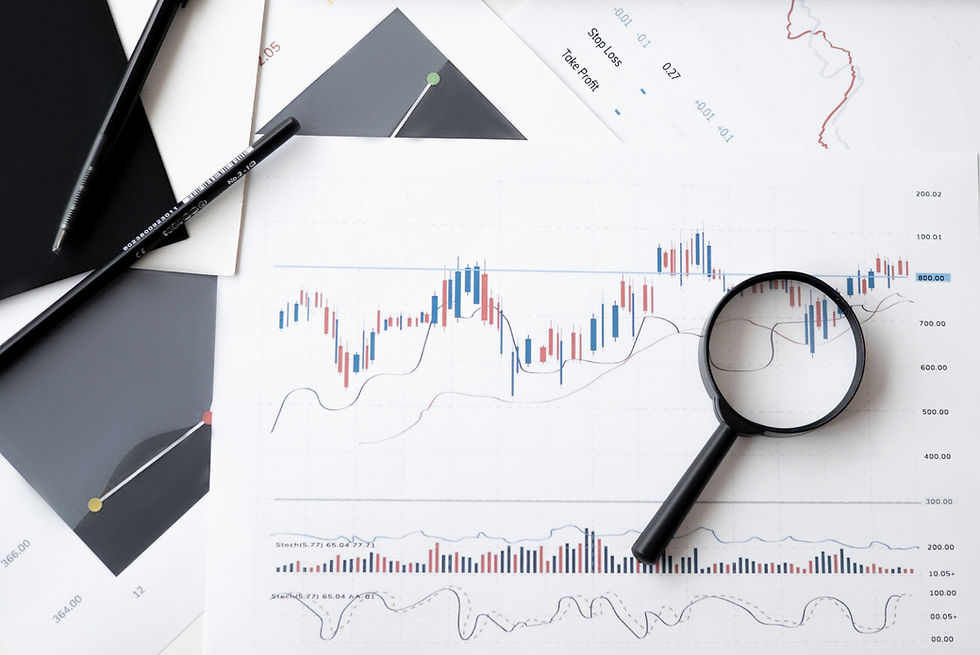Exploring the relationship between liquidity and volatility
- Markets & Mayhem

- Apr 19, 2024
- 3 min read
It's important to appreciate that liquidity and volatility are two interconnected concepts that have a significant impact on market behavior as traders.
While many focus solely on volatility as a measure of risk, it is essential to understand how liquidity levels can influence volatility and why being more selective about trades is crucial in times of lower liquidity.
What is Liquidity?
Liquidity refers to the ability of an asset or market to be easily bought or sold without significantly affecting its price. In other words, liquidity measures how quickly and efficiently investors can enter or exit a position without disrupting the market.
Higher levels of liquidity imply that there are more buyers and sellers actively participating in the market, making it easier to execute trades at competitive prices.
What is Volatility?
Volatility, on the other hand, measures the amount of uncertainty or risk associated with an asset's price movements. It is often measured using various metrics such as standard deviation, variance, or implied volatility. Higher levels of volatility indicate that an asset's price is more likely to fluctuate significantly over a given period.
The Relationship Between Liquidity and Volatility
Research has consistently shown that lower levels of liquidity are associated with higher levels of volatility (Amihud et al., 2002; Brennan & Subrahmanyam, 1996). This relationship can be attributed to several factors:
Increased Information Asymmetry: In low-liquidity markets, there is a greater imbalance between informed and uninformed investors. This information asymmetry can lead to more aggressive trading behavior, as market participants try to take advantage of their superior knowledge. This increased activity can amplify price movements, resulting in higher volatility.
Lack of Market Making: In illiquid markets, there are fewer market makers willing to provide liquidity and quote prices. As a result, market participants may be forced to trade at less favorable prices or wait for better opportunities, leading to larger price swings.
Increased Risk Premium: Investors in low-liquidity markets often demand a higher risk premium to compensate for the increased uncertainty associated with trading in such environments. This can lead to higher expected returns, but also increases the likelihood of large price movements.
Why Lower Levels of Liquidity Lead to Higher Levels of Volatility
In summary, lower levels of liquidity can lead to higher levels of volatility due to:
Increased information asymmetry
Lack of market making
Increased risk premium
These factors contribute to a more unstable and unpredictable market environment, where price movements are more likely to be extreme.
Implications for Traders and Investors
Given the relationship between liquidity and volatility, it is prudent to be more selective about which trades one takes in times of lower liquidity, such as what we're seeing right now in S&P 500 futures.
Here are some strategies to consider:
Wider Stops: When trading in low-liquidity markets, it is essential to set wider stops to account for potential price swings. This will help minimize losses in the event of unexpected market movements.
Smaller Position Sizes: Lower levels of liquidity often lead to increased volatility, which can result in larger-than-usual price moves. To mitigate this risk, consider reducing position sizes to limit exposure to potential losses.
More Cautious Market Selection: Be more discerning when selecting markets or assets to trade and what trade setups to ultimately take. Avoid illiquid markets or those with limited trading volume, as these may be more prone to extreme price movements.
Closing Thoughts
The relationship between liquidity and volatility is a crucial aspect of market behavior that investors and traders should consider.
By understanding how lower levels of liquidity can lead to higher levels of volatility, one can develop strategies to mitigate risk and maximize returns in a wide range of market conditions. Including simply not trading undesirable conditions and looking for more ideal setups to emerge.

.png)






コメント